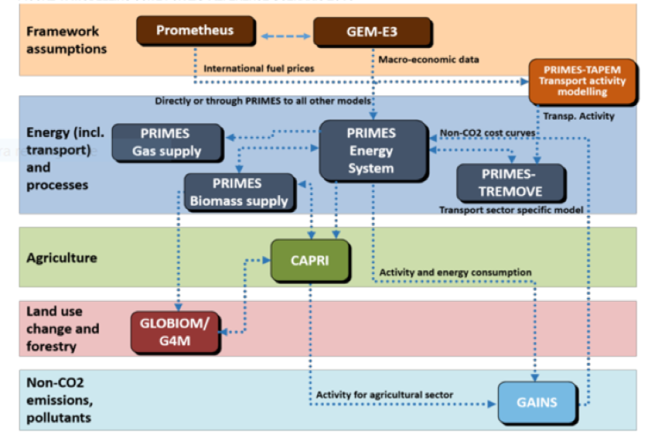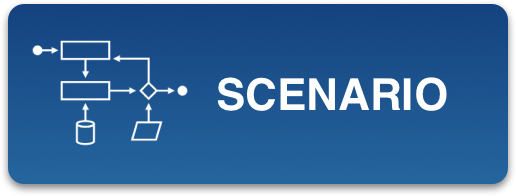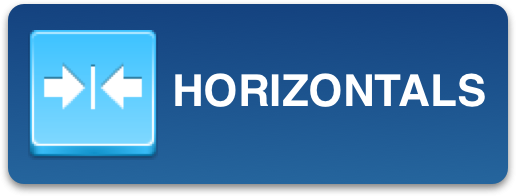The contents included in this section are DRAFTS proposed for a public consultation and are under review.
Scenario
Energy efficiency and policies
Following Europe’s goal of reducing its CO2 emission footprint, the usage of smart, intelligent and networked devices, that can run a waste-free energy management, is one of the activities that are necessary for reaching this target.
The spreading of innovative technological solutions will also contribute to improving the competitiveness of EU industry; examples include, smart meters, smart power grids and advanced building energy management (as well as several legislative actions that have been taken in order to increase buildings efficiency). These are the keys to full exploitation of the potential of renewable energy and energy savings, as well as creating improvements of energy services.
Further information are available at these links:
At the European Commission level, the initiative Energy 2020 was adopted in 2010: a strategy for competitive, sustainable and secure energy.
One of its priorities is to achieve an energy-efficient Europe with the aim to usinge technologies, investment, incentives and innovative engineering in order to improve energy efficiency.
Togeher with Directive 2012/27/EU, this initiative identified the energy efficiency challenge as a major element in ensuring the sustainability of the use of energy resources.
The transition to a more efficient energy consumption requires the development and deployment of innovative technological solutions. The European Commission has recognised that the construction sector is a major source of carbon dioxide emissions; as such the need to promote and improve innovative energy management within Member States has been recognised (along with the Directive 244/2012/EC).
Further information are available at these links:
- COM/2010/0639 final - Communication from the Commission to the European Parliament, the Council, the European Economic and Social Committee and the Committee of the Regions - Energy 2020 a strategy for competitive, sustainable and secure energy
- Overview on Energy topics
Benefits
Establishing an energy efficiency system requires the development of several standards designed for optimising a number of energy management processes tha are relatively expensive in terms of time and cost.
Thanks to the building digitalisation approach, it will be possible to choose and organise energy usage on the basis of specific consumption and performance needs, and it will be also possible to develop a systematic process for a constant improvement of energy performance.
Furthermore, the use of Smart Appliances will generate a set of short and long term benefits:
• Reduce energy costs year on year
• Generate a process of continual improvement
• Reduce the CO2 emissions
• Energy-efficiency performance
• Track energy use on line
Further information on costs and benefits available here.
Energy Efficiency Subdomains
Researches in the field of energy efficiency have focused on resources usage optimisation and energy waste reduction. A relevant step forward is to identify a good way to use the energy resources via proper energy management. A unified and structured solution is been figured out in the development of a Smart buildings paradigm.
Core items in this perspective are the following.
• Smart Grid is an electricity network that can integrate in a cost efficient manner the behavior and actions of all users connected to it in order to ensure economically efficient, sustainable power system and high levels of quality and security of supply and safety.
• Smart Meters are gas and electricity meters that offer a range of intelligent functions; those devices put consumers in control of their energy use. In this way it is possible for people to adopt energy efficiency measures that can help to cut down costs and offset price increases.
• Building Energy Management System (BEMS) also named Building Automation System (BAS) or Building Control System (BCS), are monitoring and metering systems for the indoor climatic conditions in building facilities. BEMS systems are innovative and they are a smart option to reduce energy consumption and greenhouse gas emissions, thanks also to Smart Appliance usage.
For further information:
- Digitalization Enables User-centric People Flow Planning in Smart Buildings
- Advancing Building Energy Management System to Enable Smart Grid Interoperation
- Preparatory study on Smart Appliances
Member States Situation
Member States are working hardly to understand how to generate tomorrow’s energy efficient building.
The present European scenario is based on a series of interlinked models, which combine technical and economic methodologies to avoid energy inefficiency.
The European scenario to 2050 has been designed by the European Commission, and the mentioned interlink ed model is depicted in the pictures as follows:

|
Figure 1 - Modelling suite for EU Reference Scenario
|
Standards
The following contents are the starting sources for the list of standards reported in the excel spreadsheet that can be downloaded from this page.
In the following links guidelines to different set of standards are reported:
Smart Grids
- Smart grid security certification in Europe - Challenges and recommendations, December 2014
- Final report of the CEN/CENELEC/ETSI Joint Working Group on Standards for Smart Grids
Smart Meters
Building energy management system
- Building automation and control systems (ISO)
- European Commission Office for Infrastructure and Logistics – Manual Of Standard Building Specifications
Interoperability Tool (IOP-Tool) of CEN-CENELEC-ETSI WG
- The Interoperability tool issued by CEN-CENELEC-ETSI WG is an extremely useful tool for finding the standards used
Use Case 1: Building Energy Management System
Several use cases can be identified under the Building Energy Management System (BEMS) scenario. In particular, the following cases are of interest in terms of Energy Efficiency:
- Multi-level lighting/Dimming
- Daylight harvesting
- Occupancy/ Vacancy Sensing
- Visual Incentive
About Demand and Request Management, the following cases are of interest:
- Peak Control
- Peak prevention
- Peak Shaving Demand
- Peak Shaving Supply
- Autorisation check
Details about these cases are available here.
Use Case 2: Smart Grids and Smart Meters
With reference to Smart Grids, Microgrids represent a suggested Use Case: a Microgrid is able to respond to the grids signal by reducing power consumption or feeding power back to the grid. It is possible to consider it as a customer facility that satisfies the needs of both efficient grid management and of the final users.
With reference to Smart Meters, a suggested Use Case is Operational Intelligence (OI). The OI is a real-time intelligence that manages and performs Power Grid efficiently. An OI system allows decision-making within an enhanced security environment, while improving efficiency in grid operation, allowing integration of power supply from new energy sources without ever compromising grid stability. These systems for managing AMIs are complex because deploying an OI means also to develop a significant Advanced Metric Infrastructure (AMI) relevant for a Smart Grid strategy based on a Meter Data Management.
Details about these Use Cases are available here.
Smart Grids Sample Applicable Standards
|
EN 50090-2-1 |
Home and Building Electronic Systems (HBES) - Part 2-1: System overview; architecture |
The document specifies a bus system for Home and Building Electronic Systems (HBES). Based upon the basic reference model for Open System Interconnection (OSI) the system's general structure and its architecture are described (e.g. interfaces, transmission media, etc). Document withdrawn |
|
EN 50090-3-1 |
Home and Building Electronic Systems (HBES) - Part 3-1: Aspects of application - Introduction to the application structure |
The document deals with the standardisation of a bus system for Home and Building Electronic Systems (HBES). It introduces to the underlying application structure. |
|
EN 50090-3-2 |
Home and Building Electronic Systems (HBES) - Part 3-2: Aspects of application - User process for HBES class 1 |
This part of EN 50090 specifies the structure and functioning of servers for the objects which form the interface between the application layer and the application and management. |
|
EN 50090-3-3 |
Home and Building Electronic Systems (HBES) - Part 3-3: Aspects of applications - HBES Interworking model and common HBES data types |
This European Standard gives general guidelines and recommendations to ensure interworking between HBES devices made by different manufacturers. |
|
EN 50090-4-1 |
Home and Building Electronic Systems (HBES) - Part 4-1: Media independent layers - Application layer for HBES class 1 |
This part of the EN 50090 specifies the services and protocol of the application layer for usage in Home and Building Electronic Systems. It provides the services and the interface to the user process as defined in EN 50090-3-2. |
|
EN 50090-4-2 |
Home and Building Electronic Systems (HBES) - Part 4-2: Media independent layers - Transport layer, network layer and general parts of data link layer for HBES class 1 |
This part of the EN 50090 specifies the services and protocol in a physical layer independent way for the data link layer and for the network layer and the transport layer for usage in Home and Building Electronic Systems. |
|
EN 13321 series |
Open Data Communication in Building Automation, Controls and Building Management - Home and Building Electronic Systems |
Part 1: Product and system requirement; Part 2: KNXnet/IP Communication |
|
EN 13321-2 |
Open Data Communication in Building Automation, Controls and Building Management - Home and Building Electronic Systems - Part 2: KNXnet/IP Communication |
As for Home or Building Electronic Systems (HBES) this resulting European Standard specifies, for the domain of Building Automation and Control System Application and Building Management (BACS), common rules for a class of multi-application bus systems where the functions are decentralised and linked through a common communication process. This European Standard sets the basic requirements for products and systems.
|
Smart Meters Sample Applicable Standards
|
EN 13757-1 |
Communication systems for meters and remote reading of meters - Part 1: Data exchange |
This European Standard covers a data exchange protocol for the remote reading of all kinds of meters (water, gas, heat) on the basis of the open communication ISO/OSI layer model. This Standard specifies the application layer but not the physical layer and the properties. It does not cover electricity metering. |
|
EN 13757-2 |
Communication systems for and remote reading of meters - Part 2: Physical and link layer |
The European Standard specifies parameters for the physical and link layer for baseband communication over twisted pairs (M-Bus). |
|
EN 13757-3 |
Communication systems for and remote reading of meters - Part 3: Dedicated application layer |
The European Standard specifies parameters for the application layer for baseband communication over twisted pairs (M-Bus). |
|
EN 13757-4 |
Communication systems for meters and remote reading of meters - Part 4: Wireless meter readout (Radio meter reading for operation in SRD bands) |
This European Standard specifies the requirements of parameters for the physical and the link layer for systems using radio to read remote meters. The primary focus is to use the Short Range Device (SRD) unlicensed telemetry bands. |
|
EN 13757-5 |
Communication systems for meters and remote reading of meters - Part 5: Wireless relaying |
This standard defines the requirements for the protocols to use when performing relaying in wireless meter readout networks. This document is an extension to Part 4 of EN 13757, Wireless meter readout . |
|
EN 61968-9 |
Application integration at electric utilities - System interfaces for distribution management – Part 9: Interface for meter reading and control |
This standard specifies the information content of a set of message types that can be used to support many of the business functions related to Meter Reading and Control. |
|
EN 61968-3 |
Application integration at electric utilities - System interfaces for distribution management - Part 3: Interface for network operations |
This standard specifies the information content of a set of message types that can be used to support many of the business functions related to network operations. Typical uses of the message types defined in this standard include data acquisition by external systems, fault isolation, fault restoration, trouble management, maintaining plant, and commissioning plant. |
|
EN 61968-4 |
Application integration at electric utilities - System interfaces for distribution management – Part 4: Interfaces for records and asset management |
This part of IEC 61968 specifies the information content of a set of message types that can be used to support many of the business functions related to records and asset management. Typical uses of the message types defined in this Part of IEC 61968 include network diagram edits and asset inspection. Message types defined in other Parts of IEC 61968 may be relevant to these use cases. |
|
EN 61968-6 |
Application integration at electric utilities - System interfaces for distribution management – Part 6: Interfaces for maintenance and construction |
The IEC 61968 standard, taken as a whole, defines interfaces for the major elements of an interface architecture for distribution systems within a utility enterprise. Parts 3 through 9 of IEC 61968 define interfaces relevant to each of the major business functions described by the Interface Reference Model. |
|
EN 61968-8 |
Application integration at electric utilities - System interfaces for distribution management - Part 8: Interface standard for customer support |
The IEC 61968 standard, taken as a whole, defines interfaces for the major elements of an interface architecture for distribution systems within a utility enterprise. Parts 3 through 9 of IEC 61968 define interfaces relevant to each of the major business functions described by the Interface Reference Model. |
Guidelines
Interoperability
Over one-third of energy consumption occurs within public and private buildings, creating a high production of Carbon Dioxide (CO2), using high amounts of energy, as well as costing significant amounts of money.
However, energy consumption might be significantly decreased through BEMs, that create Smart Homes by promoting interconnection between smart appliances and ICT applications.
Involving Smart Grids in home and building automation systems has led to the development of different standards for interoperable products to control; home appliances, lighting, energy and security management. In this framework, the main problem is not the number of missing standards but their management; the main step forward in this sense is to generate a kind of interoperability set of standards allowing a suitable level of interoperability and facilitating choice.
Vendor Lock-In
The Universal Smart Energy Framework (USEF) has been created to accelerate and drive more efficiently the development of device smart system; it provides for the possibility to implement an unique and commercial smart energy service by avoiding the risk of vendor lock-in.
By sharing common standards, USEF reduces the cost to connect different technologies to the energy system. Its market-based control mechanism establishes specific rules required to optimise the whole system, ensuring, delivering and managing at lowest cost energy production.
Further information on USEF availabale here.
Energy Service Companies (ESCO)
The Energy Efficiency Directive issued in 2012 gave a common standard meaning about ESCO as a “natural or legal person who delivers energy services or other energy efficiency improvement measures in a final customer’s facility or premises". Currently, Energy Service Companies (ESCO) finance the implementation of energy efficiency tools and obtain their remuneration directly from money savings derived by energy economy.
Therefore, ESCO could be defined by three main characteristics:
- companies that have the purpose of energy savings by a smarter energy management;
- Remuneration is tied to energy savings achieved;
- ESCO used to finance the operations for energy saving warranty.
The development of ESCO in the European Market is quite recent.
Many of the ESCO markets have not only grown in size but have started to show a structured and more mature format. Additionally, it is possible to identify some relevant success factors such as:
• Manifested and credible commitment by governments and PA to a sustainable energy. Supportive policy framework, creations of ESCO legislation and measures to remove barriers;
• Tools, models and handbooks that can be use in various stages of the project implementation. Standard documents have been advocated by EU countries. Established statistics system, data collection and management systems have been found to decrease transaction costs, and therefore increase the accessible profits for ESCO projects;
• Financing and removal of financing barriers;
• Rising awareness about activities.
Implementation guidelines from european network of transmission system operators for electricity (ENTSO-E) on the matter follows:
|
ENTSO-E acknowledgement process |
ENTSO-E Acknowledgement Document (EAD) Implementation Guide |
The objective of this guide is to define the generic technical and application acknowledgement document that can be used in all ENTSO-E processes. |
|
ENTSO-E Capacity Allocation and Nomination (ECAN) |
ENTSO-E Capacity Allocation and Nomination System (ECAN) Implementation Guide |
The objective of this implementation guide is to make it possible for software vendors to develop an IT application for market players that can exchange information for transmission capacity rights allocations and nominations within the congestion management and scheduling processes. |
|
ENTSO-E harmonized Role Model |
The Harmonised Electricity Market Role Model |
This document describes a model identifying all the roles that can be played for given domains within the electricity market. The Role Model has been developed by ENTSO-E and the associated organisations EFET and ebIX. It covers both the electricity wholesale and retail markets. |
|
ENTSO-E Market Data Exchange Standard (MADES) |
MADES Communication Standard |
The MADES acronym is short for: MArket Data Exchange Standard. The MADES initiative specifies a standard for a communication platform which every Transmission System Operator (TSO) in Europe may use to reliably and securely exchange documents. |
|
ENTSO-E Reserve Resource Planning (ERRP) |
ENTSO-E Reserve Resource Process (ERRP) Implementation Guide |
The objective of this implementation guide is to make it possible for software vendors to develop an IT application for market players that can exchange information for reserve resource tendering, planning and activation within the balance management process. |
|
ENTSO-E Scheduling System (ESS) |
The ENTSO-E Scheduling System (ESS) Implementation Guide |
The principal objective of this implementation guide is the standardization of the scheduling process information exchanges between Market Participants on the European Internal Electricity Market. It has a secondary objective to make it possible for software vendors to develop an IT application that can exchange electricity market schedules, such as day ahead or intraday schedules, between all related parties in all countries. |
|
ENTSO-E Settlement Process (ESP) |
ENTSO-E Settlement Process (ESP) Implementation Guide |
The objective of this implementation guide is to make it possible for software vendors to develop an IT application for market players that can exchange electricity market settlement information, such as finalized schedules, regulation data, aggregated metered information and imbalance reports, to all concerned parties within a given balance area. |
Horizontals
Security and Privacy
- Guidelines for Smart Grid Security and Privacy policy
- Guidelines for BEMS Security and Privacy policy
- Guides for Smart Meters Security and Privacy policy
Key Security Standards
|
ISO/IEC 27001 |
Information technology - Security techniques - Information security management systems - Requirements |
This International Standard covers all types of organisations (e. g. commercial enterprises, government agencies, non-profit organizations). This International Standard specifies the requirements for establishing, implementing, operating, monitoring, reviewing, maintaining and improving a documented ISMS within the context of the organizations overall business risks. It specifies requirements for the implementation of security controls customised to the needs of individual organizations or parts thereof. |
|
ISO/IEC 27002 |
Information technology - Security techniques - Code of practice for information security management |
This International Standard establishes guidelines and general principles for initiating, implementing and maintaining information security management in an organisation. |
|
ISO/IEC 27009 |
Information technology -- Security techniques – Sector-specific application of ISO/IEC 27001 |
Information technology -- Security techniques – Sector-specific application of ISO/IEC 27001 |
|
ISO/IEC 29190 |
Information technology -- Security techniques – Privacy capability assessment model |
This standard provides organizations with high-level guidance about how to assess their capability to manage privacy-related processes. |
|
ISO/IEC 27019 |
Information technology -- Security techniques -- Information security management guidelines based on ISO/IEC 27002 for process control systems specific to the energy utility industry |
Provides guiding principles based on ISO/IEC 27002 for information security management applied to process control systems as used in the energy utility industry. The aim of ISO/IEC TR 27019:2013 is to extend the ISO/IEC 27000 set of standards to the domain of process control systems and automation technology, thus allowing the energy utility industry to implement a standardized information security management system (ISMS) in accordance with ISO/IEC 27001 that extends from the business to the process control level. |
|
ISO/IEC 19790 |
Information technology -- Security techniques -- Security requirements for cryptographic modules |
Security requirements for a cryptographic module utilized within a security system protecting sensitive information in computer and telecommunication systems. |
|
IEC 62351 |
Power systems management and associated information exchange - Data and communications security |
The scope of the IEC 62351 series is information security for power system control operations. The primary objective is to “Undertake the development of standards for security of the communication protocols defined by IEC TC 57, specifically the IEC 60870-5 series, the IEC 60870-6 series, the IEC 61850 series, the IEC 61970 series, and the IEC 61968 series. Undertake the development of standards and/or technical reports on end-to-end security issues.” |






